J.P. Instruments EDM-830 Handleiding
J.P. Instruments
Niet gecategoriseerd
EDM-830
Bekijk gratis de handleiding van J.P. Instruments EDM-830 (30 pagina’s), behorend tot de categorie Niet gecategoriseerd. Deze gids werd als nuttig beoordeeld door 42 mensen en kreeg gemiddeld 4.9 sterren uit 21.5 reviews. Heb je een vraag over J.P. Instruments EDM-830 of wil je andere gebruikers van dit product iets vragen? Stel een vraag
Pagina 1/30

FAA APPROVED INSTALLATION MANUAL FOR THE EGT-701 Report 103
INSTALLING THE EGT-701 SCANNER® 1/20/09 Rev-E
THE OWNER OF THIS EDM-700/800/730/830
MUST KEEP THIS MANUAL
TABLE OF CONTENTS
Page
1) INSTALLING THE INDICATOR 3
2) EXHAUST GAS TEMPERATURE PROBE 3
3) TURBINE INLET TEMPERATURE PROBE 3
4) CYLINDER HEAD TEMPERATURE PROBE 4
5) SPARK PLUG GASKET CHT PROBE 4
6) INDUCTION AIR TEMPERATURE PROBE 4
7) OIL TEMPERATURE PROBE 5
8) OIL PRESSURE TRANSDUCER 7
9) OUTSIDE AIR TEMPERATURE PROBE 7
10) FUEL FLOW OPTION 8
11) WIRING 9
12) EGT AND CHT PROBE WIRING 9
13) ROUTING THE WIRING HARNESS 11
14) MANIFOLD PRESSURE INSTALLATION & CALIBRATION 12
15) RPM SENSOR INSTALLATION 13
16) OPERATING INSTRUCTIONS 14
17) INDICATOR INSTALLATION & RECORD 16
18) ENGINE OPERATION 16
19) LIMITATIONS & OPERATION 16
20) COMPONENT PARTS LIST FOR EGT PROBE 17
21) COMPONENT PARTS LIST FOR CHT PROBE 17
22) COMPONENT PARTS LIST FOR OIL PROBE 17
23) COMPONENT PARTS LIST FOR OAT PROBE 17
24) COMPONENT PARTS LIST FOR MANIFOLD PRESSURE 17
25) COMPONENT PARTS LIST FOR RPM 17
26) COMPONENT PARTS LIST FOR SINGLE ENGINE EGT/CHT 17
27) WEIGHT AND BALANCE DATA 17
28) CHANGING PROGRAMMED LIMITS 18
29) TROUBLE-SHOOTING 20
FIG-1 INSTRUMENT BEZEL TEMPLATE 22
FIG-2 EGT/CHT/TIT PROBE PLACEMENT 23
FIG-3 EGT PROBE INSTALLATION 24
FIG-6 EGT/CHT PICTORIAL LAYOUT 25
FIG-7 WIRING DIAGRAM DRAWING 300701 26
FIG-9 DRAWING 700744 FUEL FLOW WIRING 27
INSTRUCTIONS FOR CONTINUED AIRWORTHINESS (ICA) 28
J.P.INSTRUMENTS Inc.
PO BOX 7033
HUNTINGTON BEACH CA 92646
FAA APPROVED 1/20/09
Last printed 11/02/17

FAA APPROVED INSTALLATION MANUAL FOR THE EGT-701 Report 103
INSTALLING THE EGT-701 SCANNER® 1/20/09 Rev-E Page 2 of 30
READ THIS FIRST
The following notes apply to a new installation. Read this section before proceeding.
a) The JPI warranty found in the back of the pilots guide clearly states that JPI will replace defective parts
under warranty, but does NOT cover labor to remove or install any parts.
b) To prevent damage to the display it is essential that the four mounting screws not penetrate the
instrument more than 0.12 inches. Damage caused by screw penetration is not covered under
warranty.
c) You must be an FAA certified aircraft mechanic to install this instrument.
d) Check that any necessary FAA approvals (STC’s, etc) are available for the aircraft before beginning the
installation.
e) The most common cause of probe problems is poor terminal crimps. Crimp ring terminals with AMP part
45518 crimp tool or equivalent. Fold back the wire double before crimping terminals.
1/4" 1 1/2"
Fold back wire
double before
crimping terminals
2 1/4"
Thermocouple wire harness
red
yellow
f) This installation will require some parts unique to your aircraft that are not supplied with the kit,
(including but not limited to tie-wraps, hoses and fittings). Acquire all the necessary parts prior to
beginning the installation.
g) Do NOT use aluminum fittings with the FXT-201 or FXT-231 fuel flow transducer.
h) Write down the K-factor engraved on the side of the fuel flow transducer here _______. Once the
transducer is installed and covered with the fire sleeve, you will not be able to access this K factor.
i) Determine the locations of all holes before drilling to ensure that nothing interferes with the probe,
clamp, clamp screw or wire.
j) Provide service loops at the instrument.
k) Thermocouple wire length is not critical. Trim to required length, allowing for service loops at the engine
so that probes can be swapped with probes on adjacent cylinders for troubleshooting purposes.
l) Dress all wires away from high temperature components such as exhaust stacks.
m) Never splice thermocouple wire using copper wire. Use only K-type thermocouple wire. Solder using
zinc chloride flux such as Nokorode brand – rosin flux alone won’t work.
n) Observe correct polarity on all probe wires. Connect like colors together (red to red, yellow to yellow).
o) This instrument must be grounded at the engine, not at the avionics ground.
p) If a spark plug gasket probe is used, expect the CHT reading on that cylinder to be somewhat higher
than on the cylinders with bayonet probes. At additional cost an adapter probe (bayonet or screw-in) is
available that permits the factory CHT probe and the JPI probe to be placed in the same bayonet
location.

FAA APPROVED INSTALLATION MANUAL FOR THE EGT-701 Report 103
INSTALLING THE EGT-701 SCANNER® 1/20/09 Rev-E Page 3 of 30
1) INSTALLING THE INDICATOR Installation
Should Be Done In Accordance With Advisory Circular AC43.13-1A. All Models have the same basic
Part No. EGT-701 ( ).
EDM-700/800 Model :A steel template supplied with the installation kit is used as a guide for drilling two button holes
in the instrument panel. Align and the Template into the instrument panel hole. First drilling a 0.125 hole. Mount
Remove the template and check the instrument alignment, if OK redrill with a 0.147 drill. Buttons can be removed by
pulling off. The EGT-701 mounts in a standard 2.25” or 3 1/8” instrument hole. The instrument configures itself
automatically for 4 to 9 cylinders, 14/28 volt aircraft. The instrument is 7.5” deep less connectors and is 2.6 square
behind the panel.
TO PREVENT DISPLAY DAMAGE IT IS ESSENTIAL THAT THE FOUR MOUNTING SCREWS NOT PENETRATE
THE INSTRUMENT MORE THAN .12 INCHES.
DAMAGE OF THIS NATURE IS NOT COVERED UNDER WARRANTY.
EDM-730/830 Model: Mounts in a standard 3.1/8” instrument hole. First place the mounting bracket on the
instrument and tighten the clamp hex screw until you can just remove the instrument from the bracket. The Mounting
bracket is then placed behind the instrument panel hole and screwed (6-32 x ½” screws) in place using the existing
holes. Three screws should be used leaving one hole vacant on either side of the hex screw. Locate the hex screw in
a location that you can easily get to from the rear of the panel. The body of the instrument is 3.0 inches and 2.0 inches
deep less connectors. The body of the instrument is 3.0 inches and 2.0 inches deep less connectors.
2) EXHAUST GAS TEMPERATURE PROBE (EGT)
The Model M-111 Probe will fit any existing holes in the exhaust stack in any engine having the diameter of 1/8" to
1/4". If no hole exists, it will require the drilling of a 1/8" diameter hole and ream to fit. It is important that each probe
be mounted a uniform distance from the exhaust stack ange. A nominal distance of 2 to 4 inches from the exhaust
flange is recommended. (See fig-2). If the recommended distance is impractical because of obstructions, slip joints or
bends in the exhaust system then position the probes a uniform distance from the flange as space permits. Be
certain to locate all holes BEFORE drilling to ensure that nothing interferes with the probe, clamp, clamp screw or wire.
Careful matching of probe position will provide best temperature readings. Insert the probe in the exhaust or
previously drilled hole (see g-3) so that the tip of the probe is in the center of the exhaust stream. Tighten the
stainless steel clamp to a torque of 45 in/Lbs. Cut o the excess strap close to the screw. Probe warranty is void if
mounted in a slip-joint of any kind.
RADIAL ENGINES , EGT
Radial engine exhaust, require a larger EGT clamp (supplied) to fit the 2.5 inch exhaust pipe. The EGT probe is
installed in the same fashion as a Lycoming or Continental engine and should be placed between the exhaust pipe
flange and the accumulator at a distance of 2 to 3 inches form the engine exhaust ange. Cylinder head temperatures
are measured with a spark plug gasket type probe placed under the front sparkplugs. Refer to the engine
manufactures red line and set the EDM-700 appropriately. Front spark plugs will read 15 to 20 degrees cooler than
the rear plugs. Do not route the EGT/CHT harness in with the ignition harness. Do not extend the yellow
thermocouple leads with copper wire.
3) TURBINE INLET TEMPERATURE PROBE (TIT)
The standard TIT probe P/N M-111 with a special clamp is placed in the exhaust stack accumulator to a maximum
depth of 1/2 inch and approximately four (4) inches from the Turbine inlet if possible, on the wastgate side of the
turbine. TIT will appear as the seventh column “T “and the expression “1650 TIT” will be seen when the dot is in place
over it. The EDM-700 input is also compatible with the aircraft’s factory TIT and may be piggy backed.
The EDM-700 TIT cable may be connected in parallel (piggyback) at the TIT probe (preferred), or at the ship's TIT
gage. Check the TIT readings between the EDM and the ships TIT gage in flight, then do the following calibration
procedure. (This may be done in flight or on the ground.)
Product specificaties
| Merk: | J.P. Instruments |
| Categorie: | Niet gecategoriseerd |
| Model: | EDM-830 |
Heb je hulp nodig?
Als je hulp nodig hebt met J.P. Instruments EDM-830 stel dan hieronder een vraag en andere gebruikers zullen je antwoorden
Handleiding Niet gecategoriseerd J.P. Instruments

15 Augustus 2023

15 Augustus 2023

15 Augustus 2023
Handleiding Niet gecategoriseerd
- Digium
- Kelvinator
- Moulinex
- IOTAVX
- Traeger
- Club 3D
- Pro-Ject
- SEDEA
- MDT
- Ceado
- Snow Joe
- Block & Block
- T4E
- Deditec
- Mellanox
Nieuwste handleidingen voor Niet gecategoriseerd
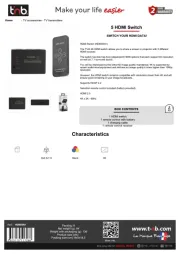
15 September 2025
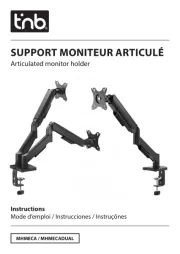
15 September 2025

15 September 2025
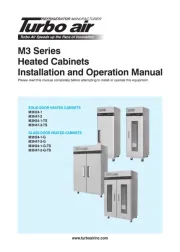
15 September 2025
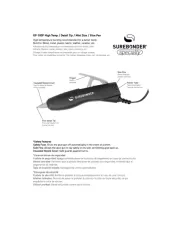
15 September 2025

15 September 2025

15 September 2025

15 September 2025
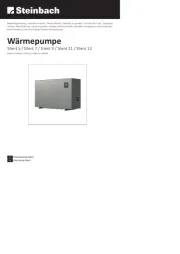
15 September 2025
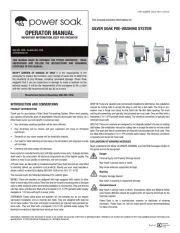
15 September 2025